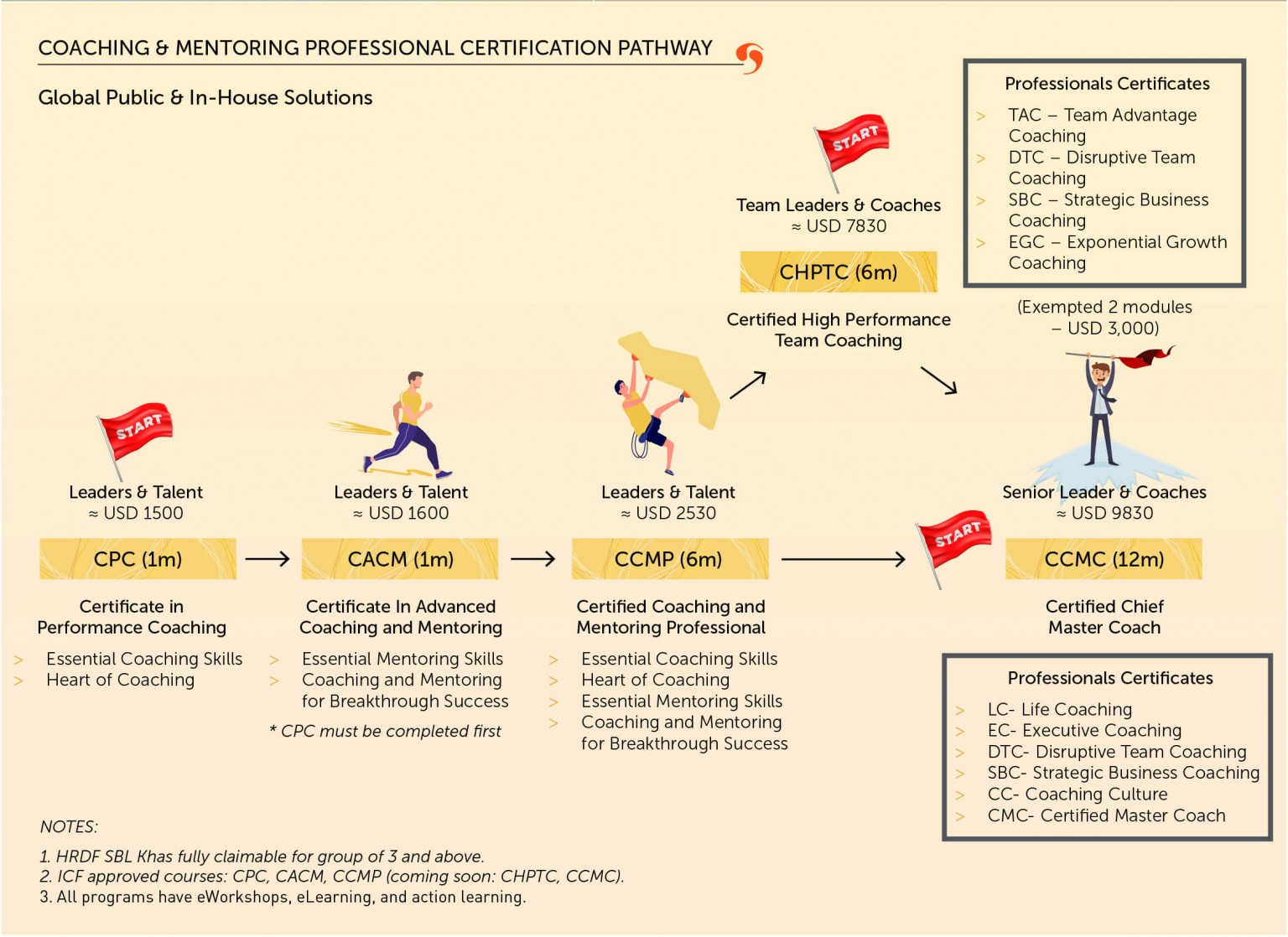Discover how continuous feedback is transforming workplaces – plus how to implement a successful feedback culture in your organization.
In today’s rapidly evolving business landscape, the traditional annual performance review is becoming obsolete. Companies are increasingly recognizing the power of on-the-spot input as a cornerstone of sustainable success. Embracing continuous feedback is not merely a trend – but a strategic imperative for businesses seeking to maintain an edge in the current “talent war”.
|
Author: Jonathan M. Pham |
Highlights
- Continuous feedback involves regular, constructive dialogues between managers and employees to foster growth, learning, and performance improvement through timely insights and open communication.
- Overwhelming evidence indicates that the traditional annual performance review is ineffective, with employees and organizations alike desiring a more dynamic approach.
- The benefits of regular feedback are diverse – including boosting employee morale, performance, talent retention, managerial effectiveness, and organizational success. That said, its implementation requires dealing with challenges such as time constraints, structural issues, cultural resistance, managerial skill gaps, and difficulty measuring its effectiveness. To improve the likelihood of success, organizations need to secure strong leadership, clear goals, employee engagement, technological support, and the definition of measurable outcomes.
- Continuous feedback excellence involves coaching, regular one-on-one meetings, iterative cycles, specificity, and a structured improvement approach.
What is Continuous Feedback?
Continuous feedback is the practice of sharing regular, constructive feedback at work through ongoing conversations between managers and employees. It’s a shift from the traditional annual review model to a more dynamic and iterative approach to performance management. The goal is to facilitate employee growth and a learning-centered culture by equipping team members with timely insights into their work – so that they may make necessary adjustments and hone their skills as a result.
Key characteristics of the process:
- Regularity: Feedback is delivered frequently, not just once a year.
- Constructiveness: The focus is on improvement, not criticism.
- Openness: A culture of open communication is essential to sustaining the practice.
- Two-way: It’s a dialogue, not a monologue. Employees are encouraged to share their perspectives.
Examples:
- Regular check-ins:
- One-on-one meetings between managers and employees.
- Team meetings with open discussion.
- Weekly or bi-weekly check-ins to discuss progress and challenges.
- Informal feedback:
- Quick praise for a job well done.
- Suggestions for improvement during a project.
- Casual conversations about work-related matters.
- Peer feedback:
- Input from colleagues on team projects.
- Collaborative problem-solving sessions.
- 360-degree feedback: Collecting input from multiple sources, including managers, peers, subordinates, and customers.
- Performance management tools:
- Online platforms for sharing and tracking progress.
- Goal-setting and progress-tracking features.
| Feature | Continuous Feedback |
Performance Review
|
| Frequency | Regular, ongoing |
Annual or semi-annual
|
| Purpose | Real-time performance, development |
Past performance, goal achievement
|
| Nature | Informal, conversational |
Formal, documented
|
| Focus | Summative assessment |
Formative development
|
| Impact | Motivational, developmental |
Evaluative, summative
|
Continuous feedback vs Performance reviews
The Case for Continuous Feedback in Today’s Business Landscape
The traditional annual performance review model is increasingly becoming a relic of a bygone era. A growing body of evidence underscores the limitations of this approach and advocates for a more dynamic, ongoing feedback system.
Recent statistics paint a stark picture. Specifically, according to Gallup, a mere 20% of employees meet with their superiors weekly, and only 14% feel inspired by performance reviews. In addition, Mercer’s findings indicate that a staggering 98% of organizations believe their annual feedback systems deliver little value. This sentiment is echoed by HR professionals, with 77% doubting the accuracy of annual reviews in reflecting actual performance.
The consequences of this feedback vacuum are far-reaching. McKinsey reports that over half of employees see no positive impact of annual reviews on their performance. Conversely, research links consistent feedback directly to increased leadership trust, a factor that can boost workplace energy by 106% and reduce stress by 74% according to the Harvard Business Review.
The benefits of shifting to a continuous feedback model are clear. Deloitte’s study reveals a 90% improvement in employee engagement when feedback frequency increases. Gallup takes it a step further, asserting that weekly input from the management can boost engagement by as much as four times.
The modern workforce, particularly younger generations like Millennials, has a distinct preference for real-time feedback. This aligns with the findings of Quantum Workplace, which shows that employees engaged in weekly one-on-one meetings with managers report significantly higher engagement levels. Cargill, for example, reports that 70% of employees feel valued due to the constant exchange of insights within the organization.
It is imperative for organizations to recognize that the traditional annual performance review is no longer sufficient. A shift in their talent philosophy is essential to unlock the full potential of employees and drive organizational success.

Why is consistent feedback important?
Benefits of Continuous Feedback in the Workplace
For employees
- Improved performance
By being provided with regular insights into expectations and contributions, employees gain a clear understanding of their role in visualizing organizational goals. This clarity empowers them to focus on specific areas for improvement, leading to increased efficiency and effectiveness. Moreover, the real-time nature of feedback enables them to make timely adjustments to their approach, preventing issues from escalating and ensuring optimal performance.
Example:
A customer service representative, Alex, is struggling to meet customer satisfaction targets. In this case, instead of waiting until the end-of-year review, his manager decides to work with Alex to identify the root cause of the problem. Early on, they notice a trend of issues related to resolving complex technical problems. Armed with this information, Alex starts focusing on improving his technical knowledge through training or mentorship.
- Increased engagement & retention
Employees thrive in environments where they feel valued and respected. Constant input offers a powerful means of acknowledging and appreciating contributions, thereby fostering a sense of value among team members.
Open and honest communication, encouraged by regular feedback exchanges, strengthens relationships between employees and managers, creating a more positive and collaborative work atmosphere. Additionally, recognizing achievements and progress through ongoing feedback serves as a potent motivator, inspiring employees to strive for excellence. This translates to a lower turnover rate and higher loyalty in general.
- Accelerated growth
By regularly assessing performance, one may identify their career aspirations and the skills necessary to achieve them. Such insights, coupled with managerial support, enable the creation of personalized development plans tailored to individual needs.
Furthermore, timely input facilitates rapid skill acquisition by allowing employees to address skill gaps promptly. This accelerated learning process empowers them to take on new challenges and advance their careers within the organization.
- Enhanced confidence
Regular positive reinforcement through feedback significantly boosts employees’ self-esteem and confidence in their abilities. By openly addressing weaknesses, individuals may work on strategies to overcome challenges, building resilience and a growth mindset. As their confidence grows, they are more likely to take on additional responsibilities and become more independent.
- Reduced stress
Regular check-ins and open communication reduce uncertainty and anxiety about performance, as everyone is aware of their expectations and progress. By identifying potential issues early on, employees can address them proactively, preventing undue stress caused by escalating problems. Moreover, a culture of continuous feedback fosters a supportive environment where team members feel comfortable seeking help and guidance, reducing feelings of isolation and overwhelm.
Read more: Leading Through Uncertainty – How to Navigate Turbulent Times
For managers & organizations
- Enhanced decision-making
By gathering real-time input from employees at all levels, organizations may gain insights into what works well and what doesn’t, enabling them to make data-driven choices. Additionally, it allows the management to quickly adapt to changing market conditions and customer needs, ensuring that they remain competitive.
Example:
A tech startup is experiencing declining customer satisfaction scores. They decide to implement a system of regular customer surveys and employee feedback channels. Through real-time data, they discover that a recent software update has introduced several bugs, causing frustration among users. Additionally, internal discussions indicate that the development team was rushed to meet the release deadline, compromising quality.
Based on these findings, the company makes it a priority to fix the bugs immediately. In addition, they adjust development processes to emphasize quality over speed, provide additional training to the development team on quality assurance, and implement a more rigorous testing phase for future updates.
When open and honest communication between employees and management is encouraged, the result is increased trust and transparency. As team members learn to share knowledge and insights, they contribute to building up a cohesive, supportive work environment characterized by teamwork, mutual respect, ownership, and accountability.
- Improved leadership skills
The practice of regularly providing and receiving feedback gives leaders the opportunity to refine their communication, coaching, and mentoring abilities – as well as encourages empathy, active listening, and the ability to offer constructive criticism. By actively seeking advice from others, leaders demonstrate vulnerability and a commitment to personal growth, which is crucial to fostering trust and respect among team members.
- Accelerated talent management
Through regular performance reviews and informal feedback sessions, companies may have the chance to pinpoint individuals who consistently exceed expectations and demonstrate leadership potential. This gives them the foundation to come up with targeted development plans for high-performers, ensuring their continued success and retention.
Read more: Succession Planning – Securing the Future of Business

The role of continuous feedback in performance management
Challenges of Continuous Feedback
- Time commitment
The practice of continuous feedback demands a significant time investment from both managers and employees. Regularly engaging in meaningful conversations about performance requires consistent effort and prioritization – making it extremely challenging to sustain it while still catering to the demands of daily work.
To overcome this hurdle, organizations should aim to foster a culture where feedback is valued and integrated into the workflow, rather than seen as an additional burden.
- Lack of structure
Without a clear framework (including well-defined performance goals), employees may feel overwhelmed by excessive input, while managers struggle to provide consistent and actionable guidance. As a result, team members face difficulty prioritizing and acting on the information received. Establishing clear guidelines and expectations for feedback delivery is crucial to address this challenge.
- Culture of avoidance
Providing and receiving constructive criticism is uncomfortable for many people. Employees may fear repercussions or damage to their relationships with superiors, while managers may hesitate to address performance issues for similar reasons.
To resolve the above-mentioned problem, organizations must create a psychologically safe environment where open and honest communication is encouraged and valued.
Transitioning from traditional performance reviews to a continuous feedback model is often met with resistance. Our innate tendency to stick with established routines is among the reasons that make us hesitant to adopt new practices. Effective change management strategies, clear communication about the benefits of the transformation, and adequate support during the transition period are crucial to preventing this resistance from interfering with long-term organizational success.
- Manager training
Effective feedback delivery is a skill that requires development. Managers need training on how to provide constructive criticism, active listening, and coaching techniques; otherwise, they may inadvertently demotivate their team members. Investing in executive coaching and training is essential to ensure that feedback is a positive and productive experience for everyone involved.
- Measuring impact
Quantifying the impact on employee performance, engagement, and overall business outcomes requires careful planning and measurement. Without clear metrics in place, it will be tricky to justify the time and resources invested.

Disadvantages of continuous feedback
Continuous Feedback Success Factors
Leadership commitment
Leaders must be ardent supporters whose role is to clearly communicate the importance of feedback for both individual and organizational growth. Their enthusiasm and commitment will inspire others to embrace the process.
At the same time, they should exemplify the desired behavior by actively participating in input exchange sessions, where they demonstrate vulnerability and openness. This creates a psychologically safe environment where feedback is seen as a valuable tool for development.
Clear expectations
Organizations must articulate the specific goals of the initiative, ensuring that everyone understands its purpose and benefits. Providing clear guidelines fosters consistency and prevents misunderstandings. Additionally, determining a regular cadence for interactions helps to create a structured approach while avoiding overwhelming employees.
Example:
A mid-sized tech company is rolling out a new CRM system to improve customer interactions and sales efficiency. Their agenda is as follows:
1. Goals
- Increase sales by 15% within the first year of CRM implementation.
- Improve customer satisfaction scores by 10% within six months.
- Achieve 90% user adoption of the CRM system within three months.
2. Purpose & benefits
- Explain how the CRM system will streamline sales processes, provide a centralized customer database, and improve data-driven decision-making.
- Highlight how the system will help sales reps spend more time with customers and less time on administrative tasks.
3. Guidelines
- Provide detailed training materials and resources on how to use the CRM system effectively.
- Establish standardized data entry procedures and reporting formats.
- Define clear roles and responsibilities for different user groups (sales, marketing, customer support).
4. Regular cadence
- Schedule weekly team meetings to discuss CRM usage, challenges, and best practices.
- Conduct monthly system performance reviews and share results with employees.
- Offer ongoing coaching and support sessions for individual users.
5. Additional considerations
- Communication channels: Utilize various communication channels (emails, intranet, team meetings) to reinforce expectations.
- Employee involvement: Encourage employee feedback on the CRM system and its implementation process.
- Flexibility: Be open to adjusting expectations and guidelines based on employee feedback and system performance.
Employee involvement
Employees should be involved in shaping the feedback framework, determining the types of input they find most valuable, and establishing communication channels. Empowering team members to take ownership of their development (while also equipping them with the necessary guidance and resources) is an essential requirement for establishing a culture of accountability and engagement.
Technology
Feedback platforms provide a centralized location for sharing advice and tracking progress, making it easier for everyone to access and reflect on their performance. Integrating feedback with performance management and development systems creates a holistic view of employee growth and enables data-driven decision-making.
Measurement & evaluation
To assess the effectiveness of a continuous feedback initiative, organizations must establish key performance indicators (KPIs). Tracking metrics such as employee engagement, performance improvement, and goal attainment provides insights into the program’s success. Additionally, asking employees to share what they think about the process is essential for identifying areas of improvement.
Best Practices for Continuous Feedback
-
Fostering a coaching culture
A cornerstone of promoting feedback in the workplace is the establishment of a coaching culture – which requires a shift from traditional managerial evaluation to ongoing support and guidance. By transitioning to a coach-like role, leaders become active partners in their team members’ growth journey – whose role is to encourage open communication through active listening and create a safe space for individuals to share their perspectives, challenges, and aspirations.
Furthermore, collaboratively setting clear goals and regularly reviewing progress is essential for keeping employees focused and motivated. This shared ownership of objectives aligns individual contributions with organizational goals. Additionally, incorporating peer feedback provides a broader perspective on performance, helping individuals identify areas for improvement and celebrate successes.
Read more: Team Coaching – Guidelines for High Performance
-
Prioritizing one-on-one sessions
Scheduling consistent check-ins demonstrates one’s commitment to employee development and creates a safe space for open dialogue. A structured agenda ensures that these meetings are productive and focused – and that employees feel prepared and valued (which is crucial for honest information exchange).
To maximize the impact of one-on-one sessions, it’s crucial to translate feedback into actionable steps. By developing clear and specific action plans together, leaders empower employees to take ownership of their growth and strengthen their relationships with them.
-
Utilizing the continuous feedback loop
A continuous feedback loop is an ongoing process where regular communication between employees, peers, and managers helps to drive high performance. It’s a cyclical system where feedback is consistently shared, analyzed, and acted upon to improve individual and organizational performance.
Key components:
- Regular, timely delivery of feedback.
- Open communication.
- Action planning.
- Measurement and evaluation.
The loop typically follows these steps:
- Feedback is given: Employees receive input from managers, peers, or customers. They actively listen and seek clarification if needed.
- Feedback is analyzed: Employees reflect on the feedback and identify areas for improvement.
- Action is taken: They work on a plan to address the issue and implement changes.
- Results are measured: The impact of the changes is evaluated.
Read more: Leadership Self-reflection – How to Lead with Clarity

Establishing a continuous feedback system
-
Moving beyond “Good job”
Leaders must go beyond generic praise to truly empower their team members. They need to provide specific examples of behaviors or outcomes, as well as explain the impact of employees’ actions – so that they gain a deeper appreciation for their contributions and a sense of purpose.
For example, let’s say a marketing manager is talking to a team member who recently launched a successful social media campaign. Instead of a generic compliment like “Good job on the social media campaign. It was a great success!”, try something like:
“Your social media campaign was incredibly effective in reaching our target audience. The use of short, engaging video content paired with targeted hashtags increased our follower count by 20% in just one month. This significant growth has directly contributed to a 15% increase in website traffic, which is instrumental in generating leads and sales.”
-
The Deming Wheel (Plan-Do-Check-Act)
The Deming Wheel, or PDCA cycle, is a powerful framework for implementing continuous improvement and, by extension, continuous feedback. It presents a structured approach to identify problems, implement solutions, measure results, and standardize improvements.
Plan:
- Identify areas where feedback is needed. This could be specific roles, departments, or company-wide.
- Determine the goals of the feedback system. What do you hope to achieve? Improved employee engagement, better performance, or increased innovation?
- Develop a feedback strategy, including methods (surveys, one-on-ones, 360-degree feedback), frequency, and who will be involved.
Do:
- Implement the planned feedback system.
- Train employees on how to provide and receive input effectively.
- Begin collecting data.
Check:
- Analyze the collected feedback data.
- Identify trends, patterns, and areas for improvement.
- Evaluate the effectiveness of the feedback system.
Act:
- Implement changes based on the analysis.
- Adjust the system as needed.
- Communicate the results and actions taken to employees.

Continuous performance feedback model
How ITD World May Help With Continuous Feedback
At ITD World, we believe that continuous feedback is the cornerstone of personal and organizational growth. Our suite of solutions is designed to make this a reality for your organization.
- 360-degree feedback
ITD’s 360-degree leadership assessment provides a holistic view of leadership effectiveness. By gathering feedback from multiple perspectives – superiors, peers, subordinates, and even external stakeholders – we offer a comprehensive understanding of leadership strengths and areas for development. This data-driven approach ensures that feedback is objective, actionable, and drives targeted development plans.
- Coaching & training solutions
Building on this foundation, ITD World’s coaching programs offer personalized support to leaders at all levels. Our expert coaches partner with individuals to translate assessment insights into practical behaviors. Through one-on-one coaching sessions, we will enable leaders to develop self-awareness, build resilience, and enhance their impact.
At the same time, we also provide a range of corporate training solutions designed to equip leaders with the skills and knowledge needed to thrive in today’s dynamic business environment. From leadership development programs to communication and interpersonal skills training, our comprehensive curriculum is designed to be engaging, interactive, and directly applicable to real-world challenges.
Contact ITD World today for a FREE consultation!
Other resources you might be interested in:
- Embracing Feedback to Triumph
- Performance Coaching: Unlock People’s Greatness
- Learning & Development: Asset for Long-Term Growth
- Self-leadership: The Art of Leading from Within
- Talent Transformation: Build a Future-ready Workforce



